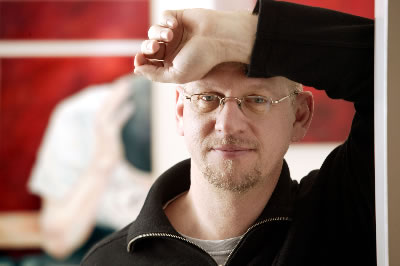|
Contrary to the exhibition title’s suggestion, the poetic-realistic portraits by Hamburg-based artist Michael Mueller do not shout out loudly “look at me”. Rather, they quietly invite the viewer to become involved in the possibilities, the emotions, the stories of the people he portrays. The models’ expressions are of a thoughtful melancholic nature. Slightly lost, with little sense of direction, they seem to float on the world’s stage - a world for which they do not seem to be well equipped. Some of the paintings resemble Þlm stills, a split second in time where the viewer is drawn into a unique moment of anonymity and of melancholy. Through his technique of using many layers the artist gradually approaches and merges with his subjects. His scenes play on colour and decoration and create both space and time for the person portrayed. “Real life is about connecting” [Martin Buber]. The paintings show clearly that connections have taken place. One has seen and recognized one another. A further recurring aspect in Muellers paintings is the merging of the intimate and the public: In a bar two young men sitting closely together appear to be at the same time miles apart. Their attitude is both melancholic yet challenging. Both focus on something, or should we say somebody, distant - somebody with whom they have exchanged looks and who has been recognised. The king is on stage, his ermine cloak slipping off one shoulder, he raises one arm in triumph. The audience is at once seated in front of the stage and in front of the painting, as well as behind the curtain. They get the impression of a lonely success on stage and are caught in a voyeuristic involvement in the scene. Clearly the Mueller paintings say: I am alone in the world. In a silent reticent manner the portraits of individuals give an insight into Mueller’s view of the scenes and the people he paints. Though complex in their meaning the paintings seem to show just moments in time. Currently
one often reads of the “new realism” in painting. Could one
assume that Mueller follows this current fashion and pigeonhole his
work thus? “In
some ways you can be much more intimate with people you do not know.”
[Elizabeth Peyton] |
